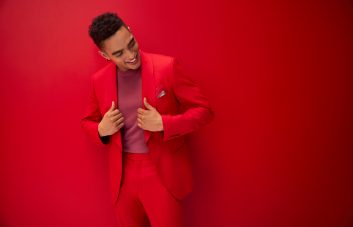Details, details, details. That is what makes the man. When it comes to creating the perfect-for-you tailored suit, the details will set you apart. Going beyond just personal preference, the type of vents you choose can even enhance your physique and overall look. In addition to the other important details we’ve talked about—buttons, pockets and lapels—we thought we’d touch on one extra detail that’s the cherry on top of a flawless suit: vents.
No Vent
Asking the average guy about venting on a suit might get a perplexing response. It’s not always a term used when it comes to dressing up. Vents are the slits or cuts on the back of your suit jacket. You also have the option of going with no vent, which can have a slimming effect on the right body shape. Keep in mind, though, that without the cuts in the back your range of motion can be somewhat limited. Opting for no vents would be great for jackets you don’t wear too often.
Single Vents
Single vents tend to appear on more casual coats and blazers, and will definitely give a bit more movement. If you put the jacket on and the vent is “open,” meaning there is a visible space, this means it’s not fitting correctly. Keep trying until the vent on the jacket you’re wearing is closed perfectly. Vents are much more than just a way of confusing you when it comes to suits—they serve as a great way to figure out your perfect fit.
Double Vents
Double-vented suits are commonly associated with formal jackets and blazers. It is much more typical to see a tuxedo jacket with a double vent than other jacket types. Naturally, with two cuts, you will have much more range of motion and ability to move freely without the jacket restricting your arm movement, and double vented suits will rarely ever pull because they always lie flat, no matter your body type. When in doubt, go with the double.





